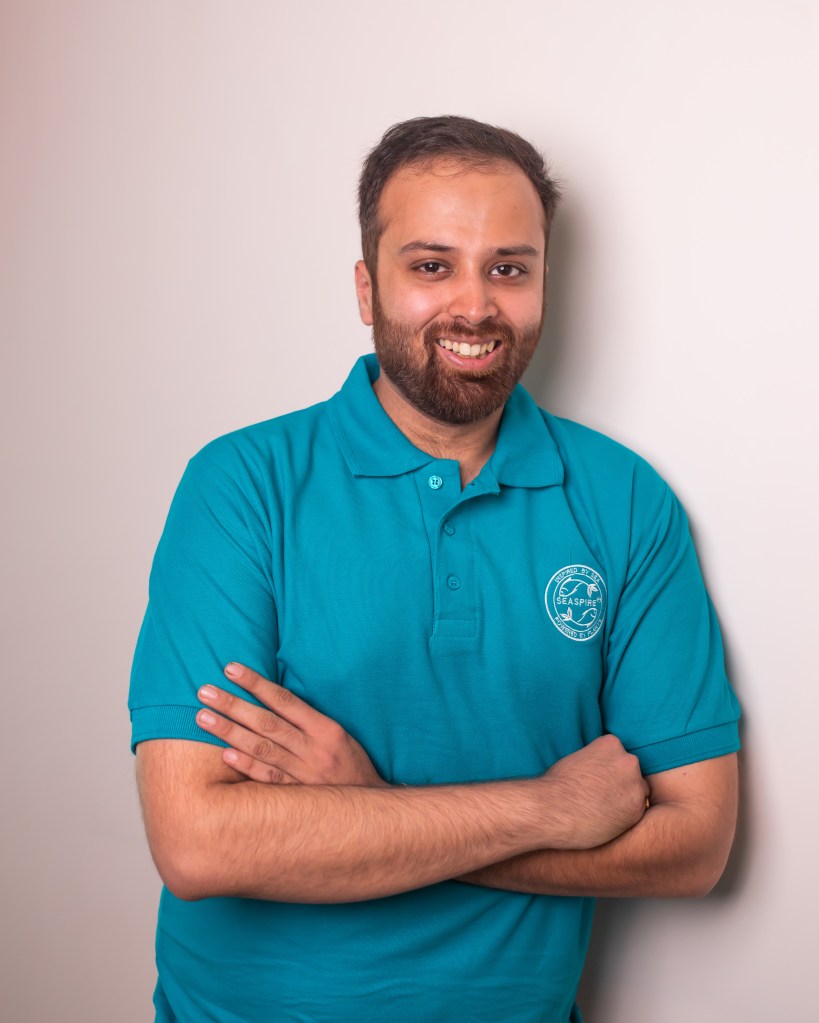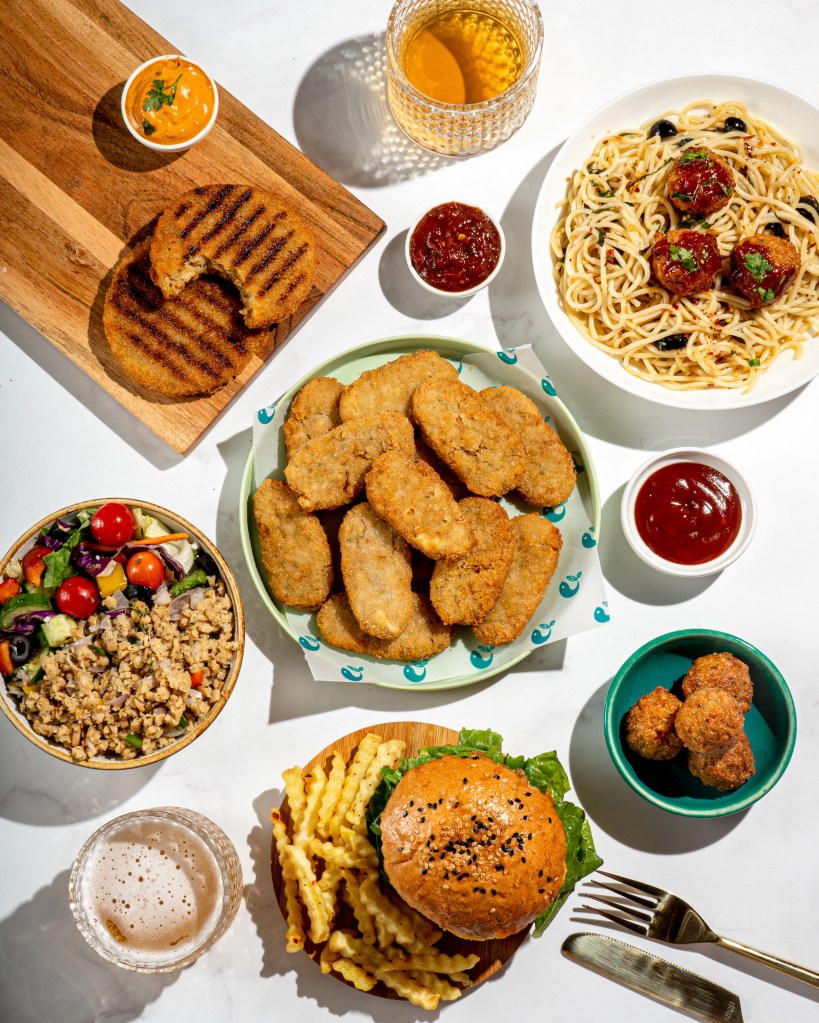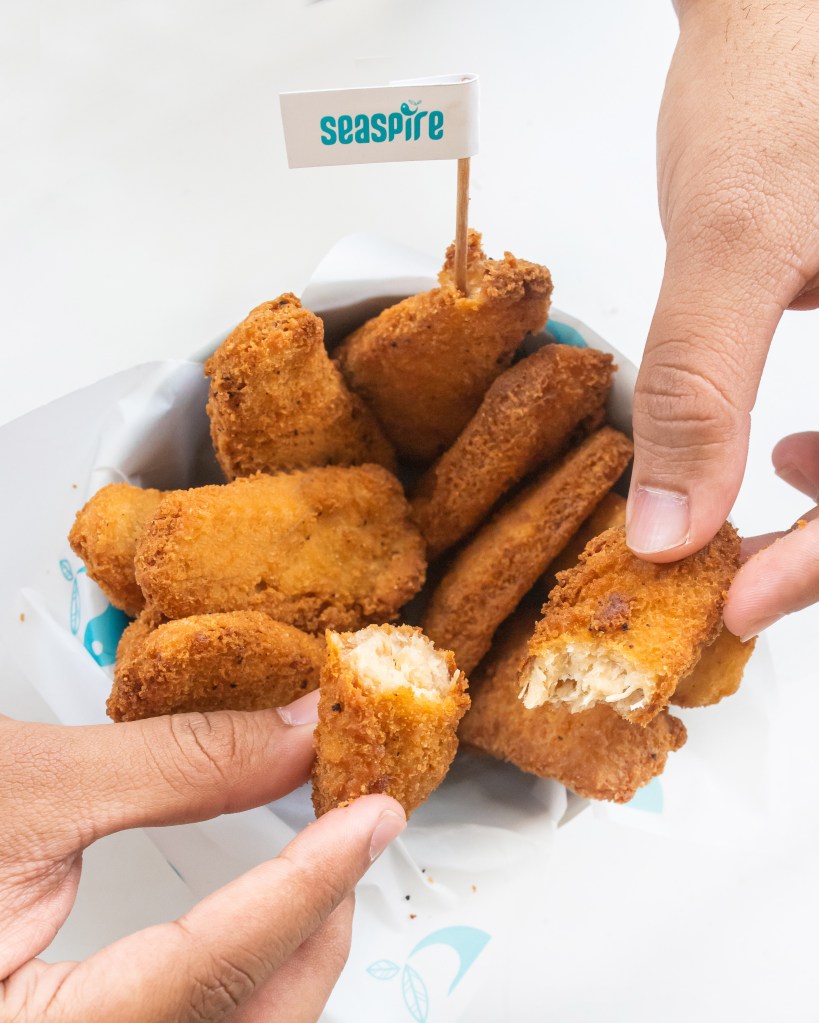Founded in 2021, Indian alternative seafood brand Seaspire bases its R&D in New Zealand and is eying expanding its manufacturing capabilities into Australia to better appeal to the domestic market.
According to new research from The Good Foods Institute, plant-based or alternative seafood has a significantly lower greenhouse gas footprint than conventionally farmed fish and crustaceans.
We spoke to Seaspire co-founder Varun Gadodia about the state of alternative seafood in APAC and the unique challenges of the market.
How do you view the alternative seafood market right now in terms of its development, and where do you see the most activity?
When the revolution for plant-based meats or alternative proteins started in the later part of 2016, no one was even talking about why we would need seafood alternatives. It wasn’t until COVID happened that everyone realised that traces [of the virus] were making their way into the fish market, and that was why seafood alternatives were needed.
Seafood has a much broader range of characteristics, which means you can’t just have a generalised alternative. It has to be really spot on from the biochemistry side of things. So as an industry trend, I could say that plant-based seafood has not got a big cut. It’s the cellular agriculture or synthetic biology technologies for seafood which is going to prevail in the industry.

Innovators are highly focusing on food service as a pathway to promote the category. And that makes sense, because with seafood, it’s very much about how local flavours are celebrated in a single product rather than pushing them into a packaged product. And consumers are doing most seafood-related cooking at home, which is usually not the case if you leave Asia and go to the West, where usually people dine outside for most of their seafood. Rather than preparing it in their homes because of the procedures around cleaning it and those sorts of things. So I think that has been an interesting insight from the commercial perspective. It is a very limited category.
So what we have seen happening in the market is that most of the alternative seafood or plant-based seafood companies are actually being acquired through M&A deals. Or they are trying to promote their brands in partnership or in collabs with some of the leading plant-based meat brands.
In terms of commercialization for the wider alternative seafood sector, I would still suggest that cellular agriculture technologies will prevail in the market as they can get the right product based on different regions. Like the very characteristic cells that they get from Atlantic Salmon will be differentiated from Pacific salmon. And that’s how they can capture the market.
We expect that in two years the category will have been bombarded with these kinds of products and innovation. But it’s definitely not unleashed to its full potential yet.


That’s a very interesting point about the habits between different regions.
Exactly. On the adoption side, the plant-based meat or related offerings have always been in the market, so consumers have that backdrop knowledge that there’s a substitute for meat products coming from soy, peas, etc. But when it comes to promoting plant-based seafood, everyone is saying, ‘what’s the need of doing this?’
I want to add a little insight into what we have observed in Southeast Asia. Even though multiple reports have come from the media talking about how Asian consumers are looking forward to an alternative form of seafood or plant-based seafood, the adoption rate is very poor. Apart from Singapore, Thailand has launched their own range of plant-based seafood, but that adoption rate is very slow. So I think breaking that stigma for even the millennials or Gen Z is going to take a lot of work into the Southeast Asian region.
Alternative meats like beef or pork address the clear climate issues of emissions from livestock and deforestation. Which climate challenges do you see alt seafood as addressing?
Essentially, when you talk about climate change, taking fish out of the ocean is the last thing we talk about. But what happens is that when we take the fish or the marine biodiversity out from the oceans, the carbon sequestration process is disturbed. Lots of environmental groups do speak about why overfishing is a cause of climate change. But I think that’s the least spoken about reason when a layman like you and me would be talking about climate change.
Secondly, for most of the alternative seafood companies, we do look at microalgae as a good source of not only proteins, but important, viable bioactives that can be conceived from the ocean rather than taken out of the fish. So if we directly harvest these plants from the ocean, that’s not only providing another pillar to the blue economy for all socioeconomic development, it also gives us another avenue to extract our nutrition by relying on the ocean in a healthier form.
Why did you select New Zealand as the R&D base for Seaspire?
I come from a research background and did my post-graduate work in New Zealand. New Zealand puts up a very high research ecosystem when it comes to some of the global research communities. But also, it’s a good place to look at primary industries and how they can be used to your advantage in these novel rising industries.

But at the same time it has some geographical disadvantages. We can’t be the manufacturers of food for the world by putting up in New Zealand. But since we can conceive of good technology there, we just wanted to have this bilateral structure where we can utilise the technical and the R&D development in that sound ecosystem, and then have that intellectual property to develop the products for the world.
The quality of produce coming from New Zealand is obviously for the top tier premium markets, so we definitely want to have that component added to the business all the time, even though our top line might be working out from within Asia. But when we take these product innovations to the world, I think that’s where New Zealand becomes an essential edge for us to operate and showcase our R&D capabilities.
You recently showcased your plant-based snapper product in the New Zealand. How was the response?
We haven’t actually touched the retail side yet because right now you won’t find a single plant-based seafood product in NZ, apart from the Gardein fishless fillets from the US that you may find at Woolworths and the New World stores. So we wanted to chase retail because it’s a good channel to propagate these products. But first we wanted to test the products with some food service. We have gotten some good responses. But right now, the consumer appetite for these products in NZ is very limited.
The vegan population over there is still quite proactive in adopting these products, but it’s not a healthy opportunity for any of the food service channels right now to include a separate plant-based seafood on the menus.
Thus far most of your capital has come from grants and accelerators. When do you anticipate you can start scaling your production?
For the current set of products that are being commercialised, we are actually working with a co-manufacturer base here in India. But when we expand to the Australia region, we would be looking for a local manufacturer because what we have realised is we would be able to save a lot on the shipping. And we don’t want to onboard unnecessary carbon credits by shipping products all the way from India to the region.
Secondly, the consumer acceptance for these products has always been more skewed towards locally-produced products. And I think since we have those capabilities within the region, we would like to stick to the manufacturing capabilities over there.
But right now we are kind of incepting our own capital, both me and my partner, just to keep us afloat. And rather than securing any external funding in the stock market, we just want to make the business cash flow positive, at least at a small scale if we are able to justify the right business ratios. I think that will speak to our strength and that will speak for our inherited capabilities in operating a business.
Is there any special certification or regulatory procedure that alt seafood products have to go through?
In this concern, FSANZ (Food Standards Australia New Zealand) has been really straightforward, because they tend to follow the FDA and the European standards. So within the region, as long as we are not using any novel ingredient, FSANZ is quite open to all sorts of nomenclatures. There’s no restrictions around – as you see in Europe – the use of words like milk and butter and cheese or chicken.
In New Zealand, the Ministry for Primary Industries (MPI) has a set of protocols. If you’re not using any novel technology or ingredients, you can simply put it under a processed food category and FSANZ will regulate it as such. While in India, the FSSAI (Food Safety and Standards Authority of India) is actually stipulating a lot of scrutiny around the rise of plant-based categories. So it’s quite hard for us to simply say that we are this form of fish in a plant-based form. So we are keeping a very open ended communication. We are just saying we are high protein, vegetarian snacks that are inspired from seafood. We are nowhere saying that we are a plant-based seafood alternative.
But nomenclature is definitely a big problem for all the innovators in the space. We are still quite in a better position in ANZ.
I heard Seaspire has a vegan shrimp product on the way. How is that coming along?
This is again inspired from a very ancient product out of China or Southeast Asia – a root vegetable called Konjac. Shrimp has always been popular in Southeast Asia, coming from China back in the 17th century, so our product is definitely inspired from the same category.
We developed some initial prototypes that we are currently testing with food service here in India. And once we can validate that this product is actually acceptable in terms of its sensorial properties, then we will scale up manufacturing. And because there’s specialised manufacturing that goes into this product, we will be looking at developing in-house production capabilities.
Because one thing we realise is that the business of shrimp is actually high output and high scale. We just can’t produce a limited quantity and try to test it with the market. When it comes to commercial production, it has to be at scale. But we are hoping to do a commercial launch for the food service and our B2B channels by the first quarter of next year.
To stay up-to-date on the latest industry headlines, sign up to Future Alternative’s enewsletter.
Posted on:


